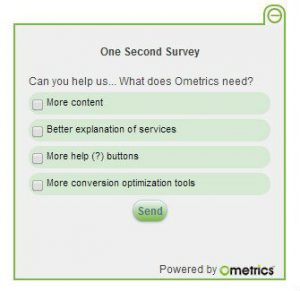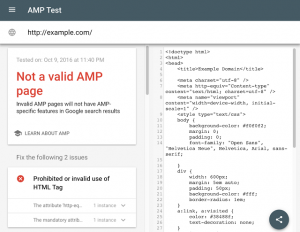A successful small business needs constant investments. You should invest your resources, time as well as cash to turn your startup into a prosperous company.
However, not every business owner has enough financial savings to support their small venture. Thus, taking out a small business loan can be beneficial and bring that much needed monetary support to stay afloat and develop the venture further.
Yet, there are certain costs of borrowing you need to be aware of and take into account. Read on to learn more about the difference between the simple interest, the APR, the factor rate as well as amortization before you apply for a loan.
Simple Interest Rate
The simple interest rate is the initial interest that the creditor charges you together with the lump sum you obtain as a loan. This rate is often the extra cash that the creditors earn off such small business loans. This number is usually fixed over the whole repayment term. The formula on how to calculate the simple interest is quite easy:
Simple interest = Loan principal x Interest rate x Repayment Term (Years)
For instance, if a borrower takes out a 12% simple interest rate on a $ 5,000, six-month loan, they will need to pay off: 5,000 x 0.12 x 0.5 = $ 300.
So, this is the extra sum that will have to be repaid over a period of six months to the lender who gave you the loan.
APR
Sometimes you may come across a loan offer that doesn’t have an interest rate in it.
Don’t be tempted to sign for it immediately, as it just means that this loan includes an APR instead.
What is an APR and how is it different from the simple interest rate?
Unlike the simple interest that has only the amount lenders want to make out of this loan, an APR presents an initial rate together with extra loan fees and charges. Certain business loans typically charge an APR instead of a simple interest or a factor rate. They are business lines of credit, administration loans and/or credit cards for business usage.
Usually, an APR can consist of several additional charges that are already included in the total sum. Hence, this figure is often higher than the simple interest rate. It can include:
- the application fee
- the origination fee
- the guarantee fee
- the service fee
- the closing fee
- etc.
Depending on the creditor, there may be more or less additional charges that are incorporated in this figure. So, pay attention to the loan offer and its conditions and compare the rates in several lending institutions before you decide which offer is the most suitable for you.
Factors That Define the Simple Interest or APR
One of the most essential things you should keep in mind before applying for any type of business loan is that creditors and finance-related service providers want to eliminate risks and make everything possible to ensure borrowers will be able to repay the debt. Thus, they are more likely to provide lower rates for consumers with certain factors that are important to them.
There are several factors that will define the amount of simple interest a borrower will be charged.
- Personal credit score. When you are launching a startup and don’t have your business credit history, your own credit score will serve as a measure of your credibility and reliability in the eyes of the creditors. Therefore, it’s significant to try and improve your score before you submit the business loan request as it will boost your chances of getting approved with the lowest APR or simple interest.
- Startup vs. established venture. Lenders are more eager to provide lending solutions to established companies rather than startups. The reason for that is that the longer your enterprise is open the more chances you have to get approved as lenders will consider you a more stable borrower. It can be harder to obtain a loan with a decent interest rate for a startup owner but your personal credit history can help here a lot.
- Industry. The field in which you start a business is also essential as creditors may offer higher interest rates and worse terms for risky ventures and industries that are less stable.
- Your creditor. Small business loans from the credit unions or local banks tend to come with smaller rates and better repayment terms but they usually have more requirements for consumers who can qualify. On the flip side, borrowers who have been rejected by traditional lending institutions can turn to alternative lenders and still receive financial help even with bad credit.
- Current debt. The last but not least factor is the amount of existing debt a borrower currently has. If you have no or little existing debt, you can qualify for better loan terms being considered as a low-risk borrower.
Factor Rate
Factor rate is another form of the business borrowing cost that may come together with a loan. It differs from the above-mentioned costs and is usually used only for merchant cash advances. The factor rate number may vary from creditor to creditor and also can be affected by the repayment schedule and the amount you want to obtain. Consumers want to find the lowest factor rate for merchant cash advances as it also means having the lowest total cost of the loan.
How to calculate the factor rate? It’s simple. You need to multiply the loan lump sum by the factor rate.
For example, when a consumer takes $ 5,000 for a year with a factor rate of 1.2, the total cost of the loan will be $ 5,000 x 1.2 = $ 6,000.
Depending on the business owner’s needs and the type of financing they require, getting a factor rate can be more widespread for the merchant cash advance only.

TheAngryTeddy / Pixabay
Amortization
Amortizing loans are typically used for long-term borrowing when you need to obtain extra funds for several years. This type of borrowing includes an amortization schedule so that the payments may be made weekly, biweekly, or monthly. The total lump sum will be divided into equal regular payments according to the repayment scheme of your choice.
The best part here is that the initial interest rate you get when you sign the contract will decrease through the lifetime of the loan. It happens because the interest payments should be made on the existing loan balance. Thus, when the loan balance reduces, so does your interest rate. This is the main difference between amortizing loans and loans with simple interest.
All in all, every borrower should pay attention to various lending options and select the one that will best suit their current business needs.
Business & Finance Articles on Business 2 Community
(39)








